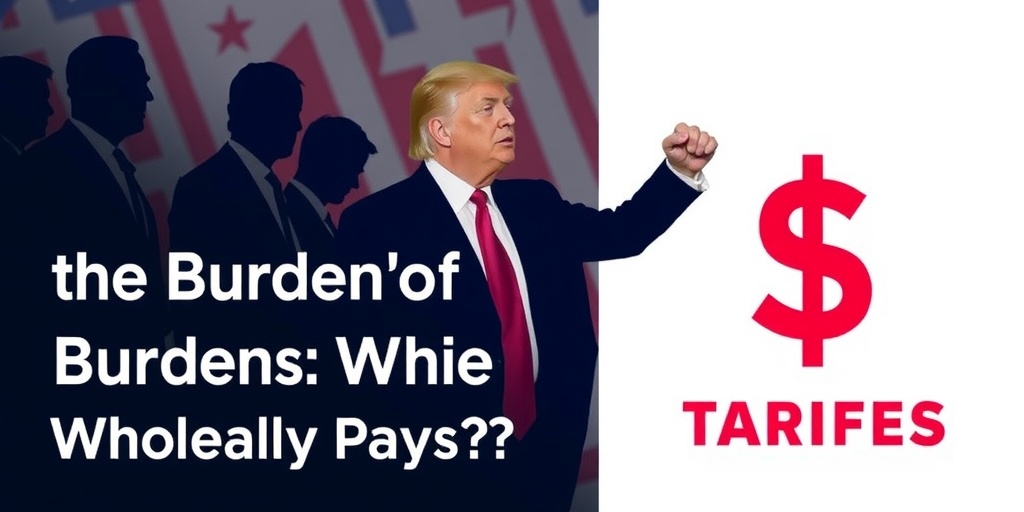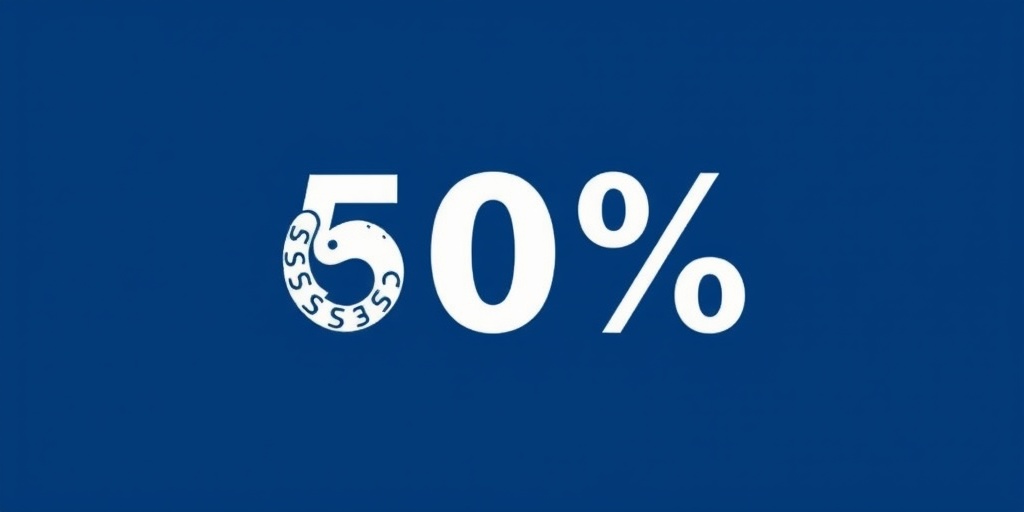Now Reading: Understanding the Burden of Trump’s Tariffs: Who Really Pays?
-
01
Understanding the Burden of Trump’s Tariffs: Who Really Pays?
Understanding the Burden of Trump’s Tariffs: Who Really Pays?

Title: Tariffs Imposed by Trump Set to Majorly Impact American Consumers and Businesses
In a move that is anticipated to revolutionize the landscape of international trade, President Donald Trump’s administration is set to implement stringent tariffs that will significantly affect American businesses and consumers reliant on imported goods. For shoppers purchasing clothing from Chinese retailers, these tariffs could mean they are facing prices more than double than what they currently pay. This comes as a result of the elimination of a special exemption for lower-valued imports, which has long facilitated more affordable access to various products from abroad.
The ramifications of the new tariff policy extend beyond just clothing purchases. Companies engaged in international trade now find themselves in complex and often challenging situations as they reevaluate their import strategies and calculate the tariffs they owe. According to Jeremy Page, a partner at Page Fura, an international trade law firm, only a small fraction of businesses appears to be prepared for these significant changes. "Maybe 3 percent of the people are well-prepared," he remarked, suggesting that this figure might even be generous when considering the widespread confusion surrounding the new tariff laws.
Currently, imports from China are subjected to a staggering 145 percent tariff. This means for every $100 worth of Chinese goods that businesses import, they are required to pay an additional $145 in tariffs to the federal government. In contrast, goods imported from most other countries are now subject to a 10 percent tariff, which may increase if those countries do not negotiate satisfactory trade agreements with the U.S. by July. This complicated landscape is further exacerbated by additional tariffs imposed on specific goods such as cars, steel, and aluminum; with the Trump administration also indicating its intention to introduce new tariffs on pharmaceuticals and computer chips.
Trump argues that these tariffs are designed to motivate U.S. companies to produce domestically rather than import from abroad. While it is anticipated that the tariffs will indeed decrease the volume of imports from China—where the U.S. imported a staggering $439 billion worth of goods last year—importers are left grappling with the reality of higher costs and ambiguous sourcing strategies.
When it comes to who ultimately bears the cost of these tariffs, the narrative often painted by Trump—that these are merely a tax on foreign countries—does not entirely reflect the reality. In practice, American businesses buying these goods are the ones who pay the tariffs upfront to Customs and Border Protection as products arrive in the United States. This cost is likely to be transferred to consumers through higher prices for goods.
Daniel J. Barabino, the chief operating officer at Top Banana, a produce distributor, emphasizes that short-term effects will inevitably lead to price increases. This phenomenon may prompt importers to reassess their contracts with foreign suppliers in hopes of negotiating lower prices in response to the new tariffs.
The process of settling these tariffs is intricate. Most importers rely on customs brokers to accurately calculate the tariffs due based on the value of goods and their country of origin. The shifting nature of tariffs has made calculations increasingly more complex, especially given recent fluctuations that have occurred rapidly. Due to this uncertainty, many customs brokers are implementing stricter payment terms, potentially demanding immediate payments or retaining funds in client accounts.
The revenues accruing from these tariffs do not simply vanish; they are routed to the U.S. Treasury Department. This money, alongside other types of taxes and government fees, is utilized to fund several governmental expenses, including salaries, military equipment, and various federal services.
Mistakes in tariff calculations do happen. For example, if a business discovers that it has underpaid, it can inform Customs and Border Protection and rectify the error, although recent executive orders from Trump have tightened these regulations. Importers misclassifying goods may face substantial penalties, an approach described by Page as fundamentally at odds with traditional trade law principles.
Amid this turmoil, delays could become a pressing issue due to the strain on Customs and Border Protection’s systems. Recent reports indicated that importers had difficulty submitting required tariff payments on certain goods, which led to a temporary easing of regulations allowing will-be delayed importers to settle their duties later.
As companies brace for further potential tariffs, there have been indications that the administration may introduce additional levies at any time, especially against countries that fail to reach trade agreements with the U.S. by the stipulated deadline. This volatility, along with apprehensions surrounding the tariffs themselves, has prompted businesses to rush imports before any new tariffs are enacted.
Despite heightened activity—illustrated by a 46 percent increase in trucking around key border crossings like Laredo, Texas—the existing supply chains appear to be managing the increased volume without significant disruption. Recent data suggest that while wait times have slightly risen at major ports, they remain well below the backlogs grocers faced during the pandemic trade spike.
In summary, Trump’s new tariffs are set to create a cascading series of challenges for American businesses and consumers. With increasing costs, the question remains whether these tariffs will indeed promote domestic production or if the complexities of international trade will lead businesses to find ways to shoulder the added burden without passing it onto consumers in the long run. The unfolding economic landscape promises to remain tumultuous as businesses attempt to navigate the new trade environment.
Stay Informed With the Latest & Most Important News
Previous Post
Next Post
-
 01New technology breakthrough has everyone talking right now
01New technology breakthrough has everyone talking right now -
 02Unbelievable life hack everyone needs to try today
02Unbelievable life hack everyone needs to try today -
 03Fascinating discovery found buried deep beneath the ocean
03Fascinating discovery found buried deep beneath the ocean -
 04Man invents genius device that solves everyday problems
04Man invents genius device that solves everyday problems -
 05Shocking discovery that changes what we know forever
05Shocking discovery that changes what we know forever -
 06Internet goes wild over celebrity’s unexpected fashion choice
06Internet goes wild over celebrity’s unexpected fashion choice -
 07Rare animal sighting stuns scientists and wildlife lovers
07Rare animal sighting stuns scientists and wildlife lovers




















